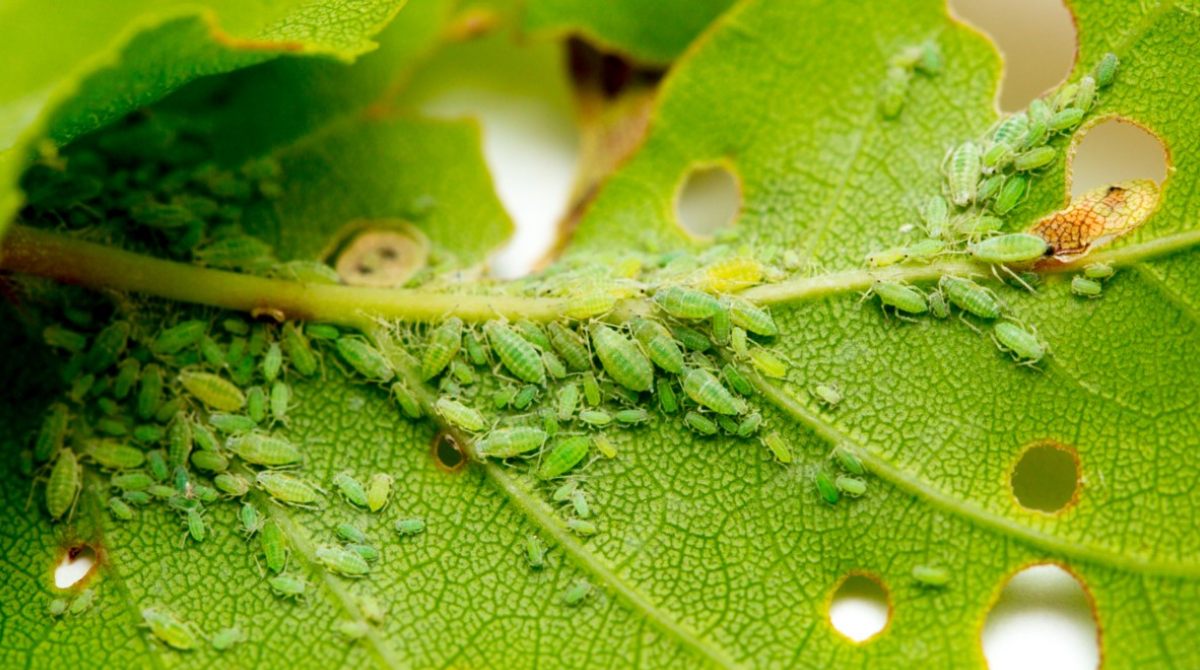With their massive trunks and sprawling canopy, baobab trees are true icons of the African savanna. However, these magnificent trees are sometimes plagued by sap-sucking aphids that can disfigure foliage and stunt growth. Getting rid of aphids on a baobab requires persistence and an integrated pest management approach. But with the right techniques, you can banish aphids from your baobab for good.
What are Aphids?
Aphids are tiny, soft-bodied insects that pierce stems and leaves to feed on plant sap. They excrete sticky “honeydew” that coats leaves and promotes mold growth.
On baobabs, aphids congregate on:
- Young shoots
- Undersides of leaves
- Leaf stalks
- Branch junctions
Colonies can contain hundreds of wingless females that give live birth to more females. This allows populations to explode rapidly.
Signs of an Aphid Problem
Watch for these clues that aphids have invaded your baobab:
- Curled, distorted, or yellowing leaves
- Sticky honeydew residue on foliage
- Sooty mold on leaves
- Aphids clustering on stems and undersides of leaves
- Ants climbing the tree to feed on honeydew
Early intervention is key to effective aphid management. At the first sign of infestation, take prompt action
IPM Techniques to Eliminate Aphids
Integrated pest management (IPM) combines multiple tactics to control pests without harming the environment, Here are IPM strategies to get rid of baobab aphids
Monitor Closely
Check susceptible new growth weekly and examine undersides of leaves. Early detection allows earlier intervention.
Remove Infested Growth
Prune away badly infested leaves, shoots, and branches. Dispose of them far from the tree to prevent spread.
Blast with Water
Forceful sprays detach aphids from foliage. Repeat often to disrupt reproduction. Add insecticidal soap to water for added impact.
Apply Horticultural Oils
These oils smother aphids on contact Coat undersides of leaves thoroughly Oils must contact insects to work,
Release Predators
Ladybugs, lacewings, and other beneficial insects devour aphids. You can purchase them from garden suppliers to unleash on your infested tree.
Apply Neem Oil
This organic pesticide repels and kills aphids. It is safe for baobabs when diluted properly. Apply it every 1-2 weeks during peak aphid seasons.
Use Sticky Barriers
Wrap sticky tape around branches to trap wandering aphids. Tanglefoot and insect glue are two products that can help snare insects.
Employ Fungicides
To manage sooty mold caused by aphid honeydew, apply neem oil or copper-based fungicides. Remove as much honeydew as possible first.
When to Call an Arborist
For large, mature baobabs, bringing in an arborist may be warranted if:
- Aphids persist after trying multiple home remedies
- You cannot reach infested areas high in the canopy
- Leaves are severely curling and falling
- Branches die back
- The tree shows signs of overall decline
Arborists have specialized equipment and access to professional-strength insecticides. However, be sure the arborist follows IPM principles to protect beneficial insects and prevent environmental contamination.
Keep Aphids Away for Good
The key to long-term aphid management is prevention:
- Maintain tree vigor with proper watering, nutrients, light, and pruning
- Remove weeds and debris near the tree
- Prevent ant access by trimming nearby vegetation and using barriers
- Avoid excess nitrogen fertilization, which stimulates aphid reproduction
- Apply horticultural oil before buds open in spring to deter colonization
- Introduce ladybugs and other beneficial insects
With persistence and an IPM approach, you can protect your treasured baobab from destructive aphid infestations. A healthy, aphid-free baobab will grace your landscape for years to come.

Winning the Battle: Effective Remedies for Each Pest
Introducing beneficial insects like ladybugs and lacewings can turn the tide in your favor. These natural predators munch on common pests, providing a green solution to your baobabs bug problem.
For those pests that slip past your living defenses, alcohol swabs can be a precise tool for spot treatment. Insecticidal soaps and neem oil are also key players, disrupting the life cycles of invaders without harsh chemicals.
Adjusting your baobabs environment can be a game-changer. Overwatering is an open invitation for pests, so ensure youre not making your plants soil a pest paradise. Improving air circulation can also help keep those pesky bugs at bay.
Fungus Gnats and Fruit Flies
Watch for tiny flyers around the soil. Theyre a sign of over-moist soil conditions and can harm young plants or weak roots.
Search for cottony masses in crevices. These pests are the bane of your plants existence, sucking sap and exuding a sticky substance.
Foolproof Aphid Control and Prevention
How do you get rid of tree aphids?
Saturate the tree’s foliage thoroughly, and rinse with water from the hose to kill root aphids and other species. Only apply insecticidal soap when temperatures remain between 30 and 90°F. Wear protective gloves and long sleeves for safety as well.
How do you get rid of aphids on broccoli?
Repeat this simple home remedy for aphids on broccoli or other plants between a few days and two weeks. The best way to tackle aphids on apple trees or aphids on petunias is to reduce the numbers with insecticidal soap while predatory insects take out the population.
How do you get rid of woolly aphids on trees?
The best way to kill woolly aphids is to spray the leaves, branches, and stems of your trees with soapy water and follow by saturating with neem oil. The results show in a few weeks. Reapplication may be necessary after heavy rain. Food-grade diatomaceous earth is an effective aphid repellent.
How do you get rid of aphids on citrus trees?
The best home remedy for aphids on trees involves killing aphids with soapy water, especially citrus trees. Dish soap coats insects, smothering them. Before spraying the plants with water, combine it with mild dish soap directly in a spray bottle. Shake the bottle well. Use it to spray both sides of the leaves and the whole stem.
